Hydroponic systems provide plants with nutrients through a water soluble fertilizer solution. One of the advantages of hydroponics is that this nutrient solution can be accurately tailored and changed, depending on the plant type, growth stage and conditions.
A nutrient solution is a water-based fertilizer solution used in hydroponics to deliver macro- & micro-nutrients to plants. Nutrients can be tailored to the plant type & growth stage. For beginners, a simple pH-balanced (with pH 5.5 – 6.5) nutrient solution recipe will be fine for most crops.
If you’re a bit of an experimenter and like to optimize your yields, hydroponics is a great way to control the nutrients that your plants get. If you’re looking for something simple and ready to go, hydroponic fertilizers are available to use as-is.
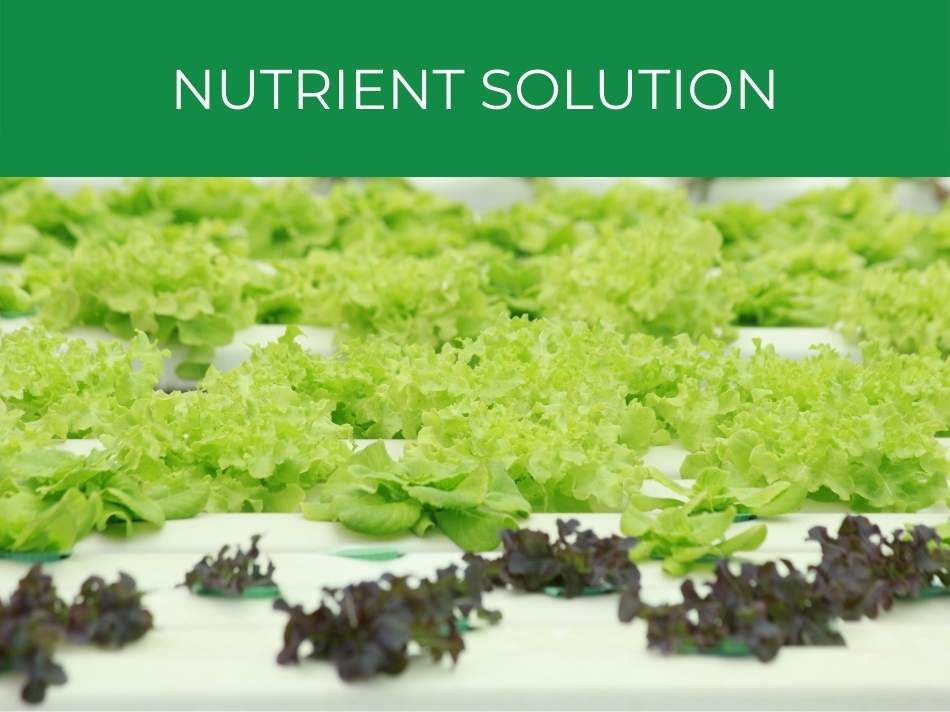
Nutrient solution
Plants do not necessarily need soil, but they do need the nutrients that they get from soil.
In hydroponics, plants get their nutrients directly from water.
A nutrient solution uses water to provide plants with dissolved macro & micro nutrients, instead of soil. The nutrient solution can be optimized by type of plant & stage of growth. Once the nutrient solution is prepared, check the pH and temperature.
Nutrient solutions need to contain the right amount of macro and micro nutrients, and be balanced to the right pH.
Plants prefer a slightly acidic pH of 5.5 to 6.0 which enables them to absorb nutrients.
The temperature of the water solution is also important, and different plants can tolerate different maximums.
Check out the complete overview of hydroponics.
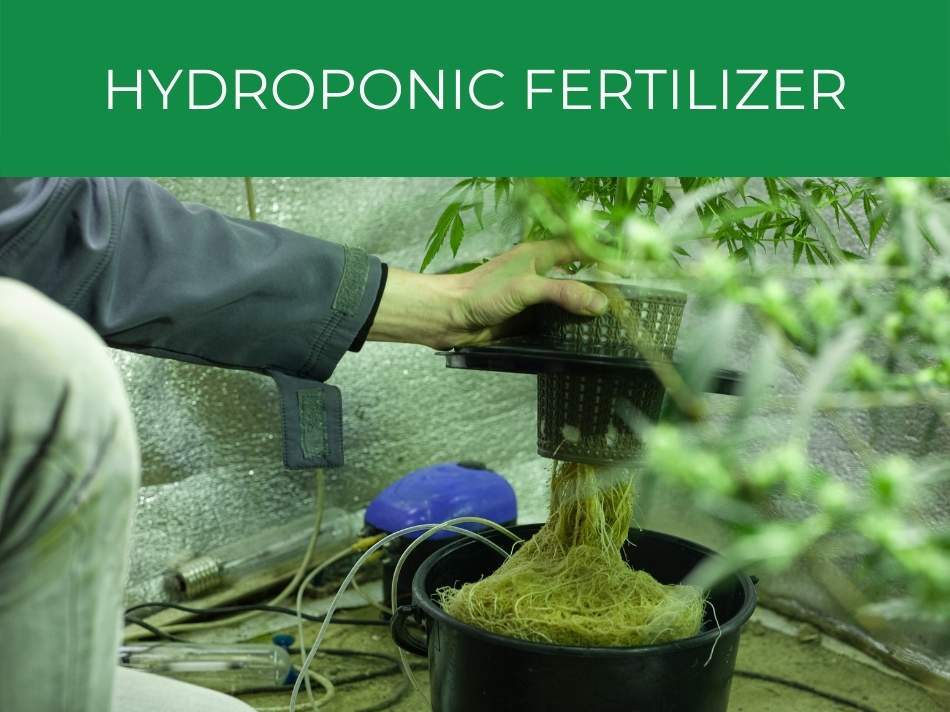
Hydroponic fertilizer
Hydroponic fertilizers are different to the fertilizer that you add to soil because they need to be water soluble, and allow plant roots to directly absorb them.
Mineral fertilizers are available as powders that are made into solutions, or liquid concentrates.
Organic fertilizers are also available for hydroponic systems.
Hydroponic fertilizers are specially designed to be dissolved in water and absorbed directly by the plant roots. Mineral fertilizers and organic fertilizers are available, and solutions should be made fresh, immediately prior to using.
Hydroponic fertilizer solutions should be made fresh each time they are used, as the nutrient value can decrease over time.
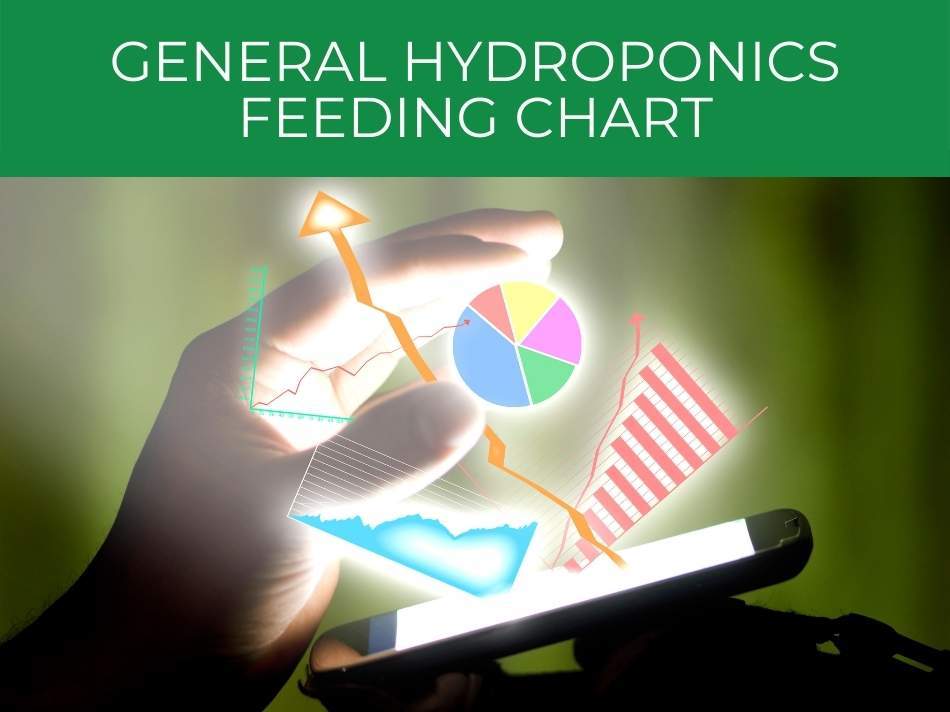
General hydroponics feeding chart
Feeding charts provide guidance on how much fertilizer should be used in a hydroponic system, depending on the growth stage.
Each fertilizer brand has its own feeding chart, but General Hydroponics has a basic chart based on a three product, six product or ten product system.
A feeding chart provides guidance on how much fertilizer you should use at each stage of plant growth. Feeding charts based on 3, 6, or 10 products, and either week-by-week or growth phase guides. Each chart is also split by light, medium or aggressive feeds based on conditions.
Feeding charts can be followed on a week-by-week basis, or on the growth phase.
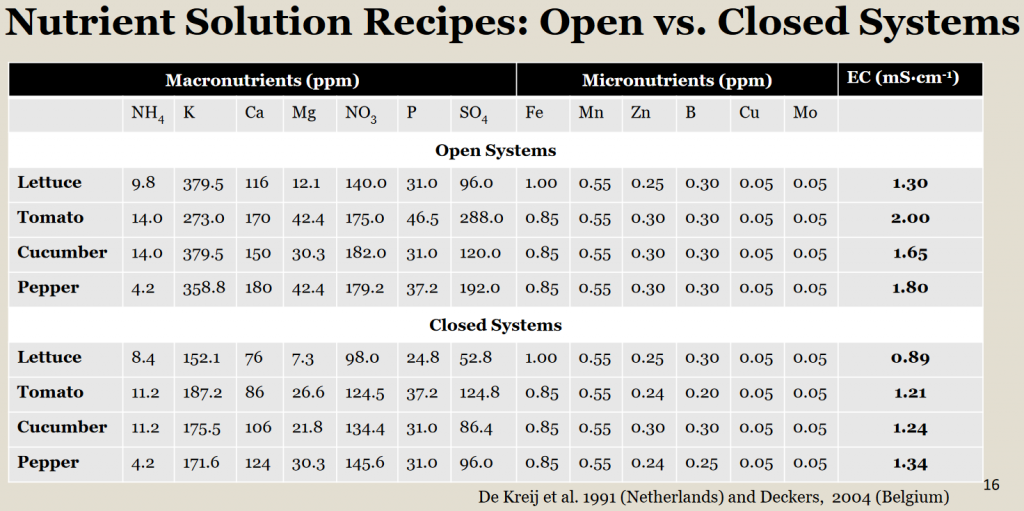
The amount of fertilizer to be used also differs based on the growing conditions, and whether your plants are feeding heavily or lightly.
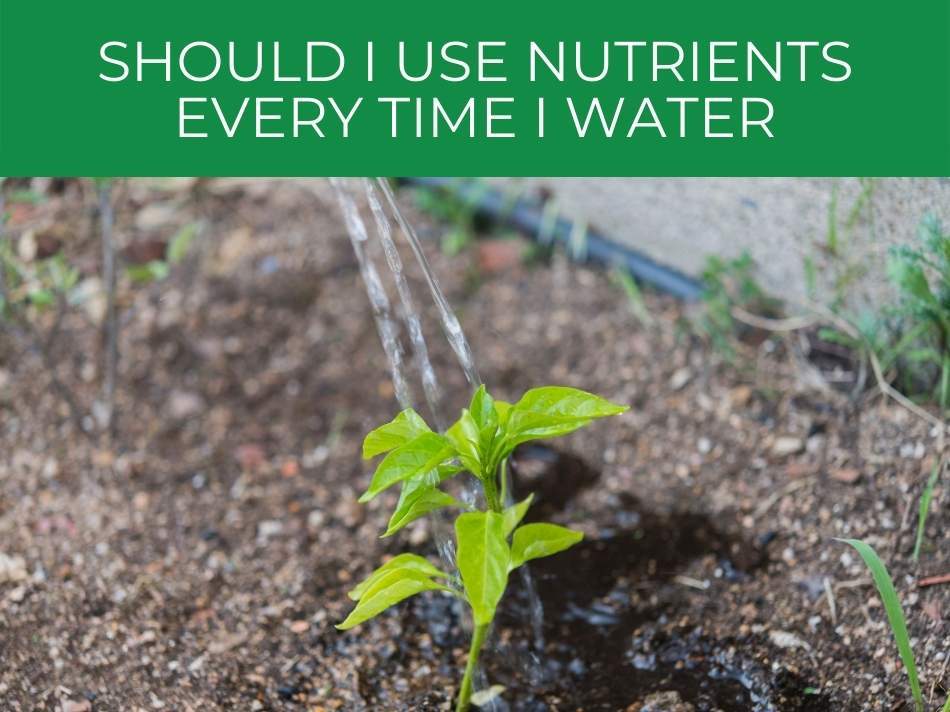
Should I use nutrients every time I water
Hydroponic water systems need topping up with fresh water once every couple of days, or even daily.
Small top-ups help the system maintain a pH balance and prevent plants from experiencing ‘shock’ when a large water change is made.
A complete change of water is required to top up nutrients, but also to remove any build up of waste products, algae and bacteria.
See the full guide to how often you should change water in a hydroponic system.
Hydroponic water needs to be topped up every couple of days, but nutrients do not typically need to be added. The system needs a complete change of water when you have topped up half of your reservoir volume. When making this complete water change, you need to add a fresh nutrient solution.
Changing the water also prevents any pipes or drippers in your hydroponic system from getting blocked.
If you live in a hard water area, you may need to change water more often, or use filtered or boiled water.
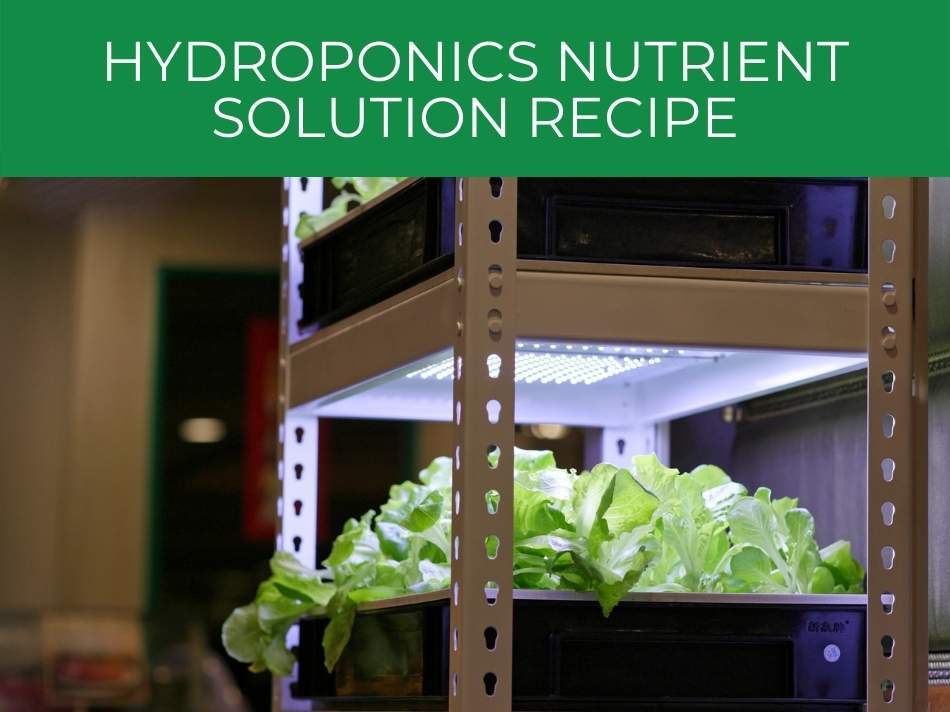
Hydroponics nutrient solution recipe
Hydroponics nutrient solutions should ideally be tailored to the crop and growing stage.
Nutrient solutions also contain micro-nutrients, which the plant needs in smaller amounts.
All ingredients for hydroponic nutrient solutions need to be water soluble.
A basic hydroponics nutrient solution recipe for 1 gallon is 6g calcium nitrate, 2.42g magnesium sulfate, 2.09g potassium nitrate, 1.39g monopotassium phosphate, 0.46g potassium sulfate and 0.4g of 7% iron chelated trace elements.
Chelated trace elements can be bought as a mixture, or made using 7% iron, 2% manganese, 1.3% boron, 0.4% zinc, 0.1% copper and 0.06% molybdenum.
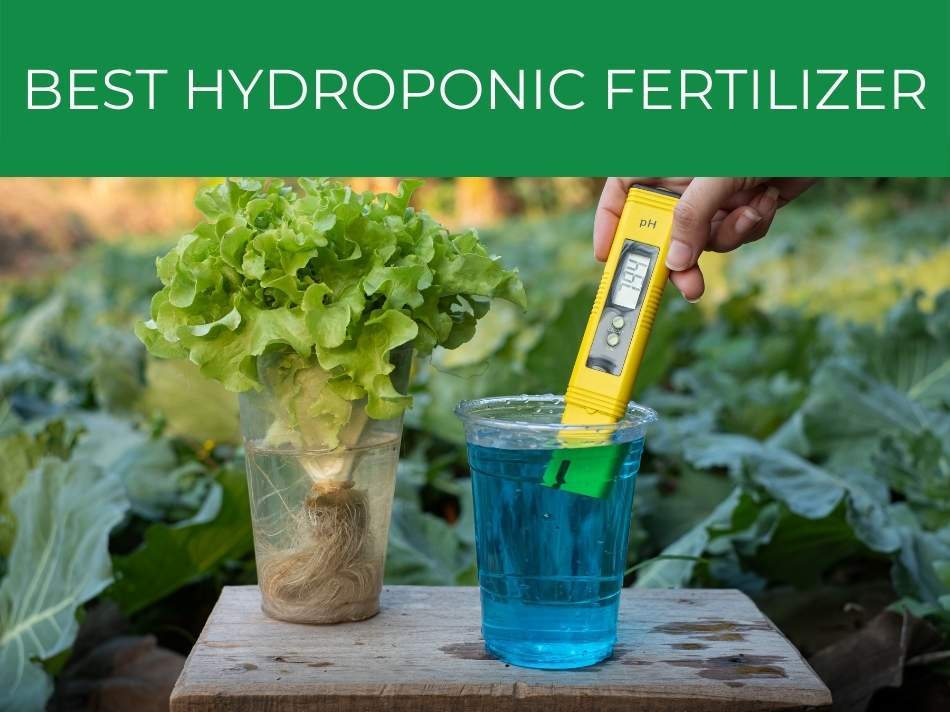
Best hydroponic fertilizer
There are many different hydroponic fertilizers available, and the best one will depend on how much effort you want to put into tailoring your nutrients.
Fertilizers are optimized for the growth stage, but can also be tailored to a particular plant type or even a specific crop.
Find out if you can grow anything hydroponically.
Hydroponic fertilizers can be mineral based, or organic, and can come as a liquid concentrate that is diluted or as powders that need to be dissolved in water.
The best hydroponic fertilizers will be pH balanced (usually pH 5.5 – 6.5), & tailored to a specific growth stage. You can find different fertilizers for specific types of plants. Hydroponic fertilizer can be purchased as a liquid concentrate or powder to be dissolved in water.
All hydroponic fertilizers are specifically designed to be used in water, and a regular soil fertilizer cannot be used in a hydroponic system.
The best hydroponic fertilizers are also pH balanced, although you should also check your mixture before you add it to your plants, and regularly whilst they are growing.
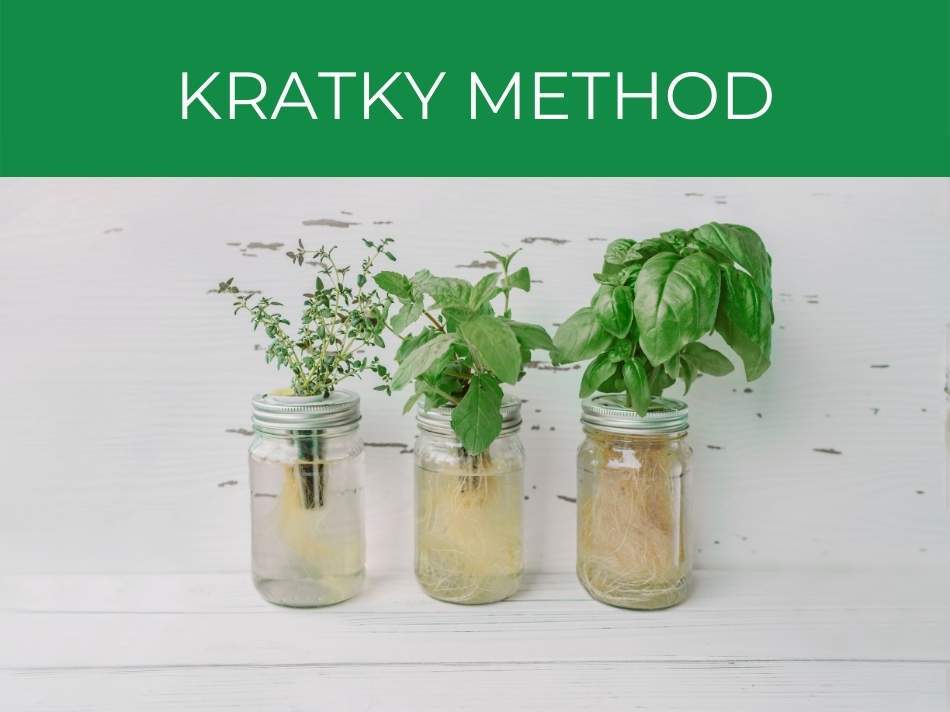
Kratky method
The simplest hydroponic system is the Kratky method, because it does not need pumps or regular water changes.
See the pros & cons of hydroponics vs. soil.
The Kratky method uses a netted container filled with a growth medium, which is suspended above a covered reservoir of water.
As the water level drops, the roots of the plant continue to grow.
The Kratky method is a simple hydroponic setup: as the water level drops, the roots of the plants grow so that they remain partially submerged. Because the water is not changed, the nutrient solution in the Kratky method needs to be calculated for the entire growth cycle.
Because the water is not changed in the Kratky method, the fertilizer in the nutrient solution needs to be enough for the full growth cycle of the plant.
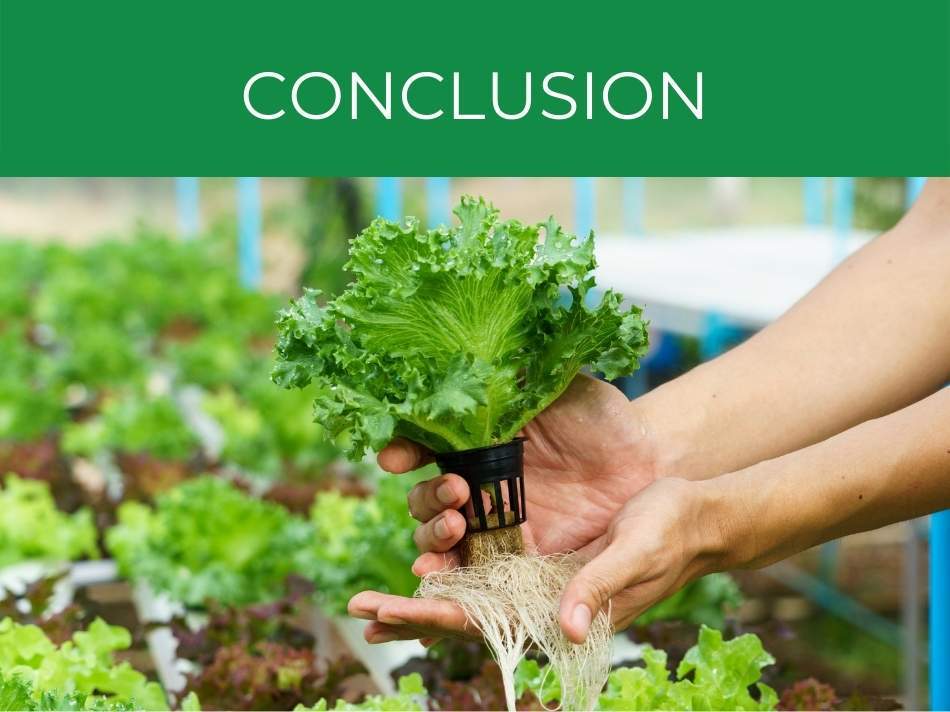
Conclusion
Hydroponics allows you to tailor the nutrients to your plants, depending on growth stage, crop type and level of feeding.
The good news is that simple hydroponic nutrient solutions are readily available, and a general fertilizer will produce good results for most crops.


